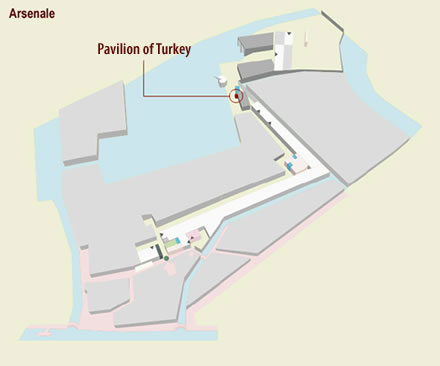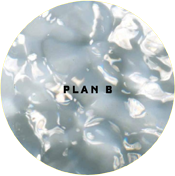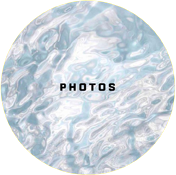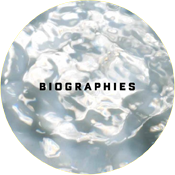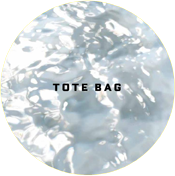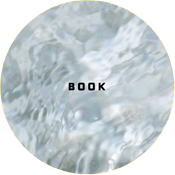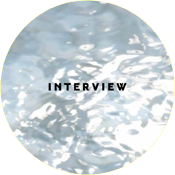SERENDIPITY
A conversation between Ayşe Erkmen and Danae Mossman, joined by Fulya Erdemci
12 March 2011
London, UK
DANAE MOSSMAN: Can we start off talking about how your ideas for Venice developed?
AYŞE Erkmen: Venice is a unique location. It is all about water. Coming from another city that is also very much about water, it has an unavoidable fascination for me. It has somehow always been a leitmotif in my work. But I still think I am able to look at water beyond clichés and romanticism because it is an element, in all its layers of meanings.
It is a topic I am familiar with and which has always been a part of my life. This room within the Arsenale in which we are working, is a room with a window to the water. The whole Arsenale is filled with rooms divided by walls, some with doors or windows to the outside, but this rooms view to the water through its large windows is a very special thing about this specific room. I thought I should not just neglect it. It is something the room is expecting from me. That is why I started thinking constantly about this window overlooking the canal. And from there I came to the point that I should bring the water inside somehow. Of course in the meantime I had lots of thoughts about how it should come inside. Sometimes one thinks of very simple ideas, but somehow I came to this very sophisticated idea of having the room work like a machine and turn this water, which comes from the canal, into drinking water. To bring in the water from the window, process it inside the room, and then turn it into something else.
DM: How do these ideas relate to the physical features of the space?
AE: The idea also comes from the character of this room itself the remnants of many machine parts, electrical appliances, a rail track which all show that something had been produced in this room, then taken out to be distributed. It is a production room. And it not only has this rare window looking to the water, but it also takes something from this water and produces something else. This rooms character made me think about these ideas. It once more turns into a room for production: it works again, it produces something, it makes noise, it takes something from the outside and brings it inside. All these thoughts brought me to this idea of drinking water because I was also thinking about Venice. The Venice Biennale, I told Fulya from the beginning, is such an event that the work needs more of a presence, more than it has in other places. A presence like a celebrity, you need to turn heads, as people are tired and our location is the very end of the exhibition, people have seen hundreds of artworks; they mix everything together. So there needs to be a statement to make people turn their heads and look. Or make them feel like there is something going on here. It has to be performative, it has to attract the attention of the people but it should not seek affection. This is how I came to the point that the people would come into the room and find this water for drinking. Of course I am aware that most people would not drink the water, even I myself would have hesitated to drink it. Actually we are all drinking such water turned into clean, potable water, but when you see it so close, it of course strikes you how dirty it is.
DM: And as your research progressed, your ideas for the work developed...
AE: As we started working on the realisation of the project (I will talk about the visual part later) Fulya and I talked with a lot of people. We tried to get the permissions but before long we understood that to get permissions for drinking the water was extremely difficult, especially given the short timeframe. Papers would have had to go from one office to another and it would have been very very difficult. We could have gotten it if we had more time perhaps. But I continued to think about how to make the project work, because I had this feeling that it would not work with drinking water, considering the permissions required. I had this idea, which fits me much better actually, because this idea of drinking, this catching people and asking them to do something the spectacle comes out of being in the Venice Biennale, where you feel one has to catch the people, and that you cant get away with making something subtle. But then I had this more basic idea that the water should come out of the canal, come into the room in the same way, work (as if it was preparing the water for drinking), but then go back to the canal. People would come in but they would not find what they normally would be expecting. There is nothing to drink, no product just the fact that the canal gets the water back. So everything is the same in the room but there is no result, you dont get the satisfaction, you dont have anything. I think this works more in line with the idea of art working with no purpose. I thought this new idea is much better, more compact, with no solution. Drinking the water is a solution: water comes in the room, goes through these machines that help to make a sculptural installation and then there is a fountain and this is the end of it. Of course I liked the idea that this installation would go inside and through the bodies of the people because then the people would become part of the process as well. In that work, that was the main thing I liked. But in this one, the Plan B project, I am satisfied that it is not satisfying the people, that there is no result.
DM: The work has a strong phenomenological impact. Wandering through the work, your sense of perception is framed by the fact that you are literally inside the machine. You are inside a process or system, inside the body or a political system, for example. Systems that are otherwise invisible in the course of daily life. Therefore the body still remains critical to the work.
AE: Yes, the body is still part of it. It walks inside as the water circulates around, and therefore participating still in the process of change from dirty to clean.
FE: It was a process. During our research we started talking about a plan b. When Ayşe was explaining the Plan B project on the phone, I remember precisely that she said I thought of many different uses of water, but anything you do with water, anything you do besides from drinking it, is making the project more redundant, reducing its strength. So she said that she decided to give it back to the canal again. And at that time I was very excited because I thought, as Ayşe put it, there is a catharsis in the idea of consuming water: you drink it, enjoy and then go. But in the second one it continues. For me, it is conceptually, politically and poetically much stronger, because what you are trying to do is a futile gesture. Of course physically and ultimately you are doing it drop-by-drop yet still you are cleaning the water. The whole idea is so overwhelming, so utopic, that it becomes almost humorous. I found the idea exceptionally witty.
DM: A natural part of your process as an artist is working through the obvious, the things that you are immediately confronted with, and then looking for a tension or an antagonism in that space or situation. I think in this project you seem to have found that the tension really was this idea of a futile (or possibly hopeful?) gesture. The system is made obvious so you can see the potential, but as a viewer you are not in any way given the satisfaction of a solution.
AE: The impossibilities that come up in the process of making a work, working through to realisation, are always helpful in that they take you to a point of reduction. You give up something. You have to give up one part of your work. And this makes it more tense and dense. And this futile gesture you are mentioning has come up through the difficulties and the emergency. This naturally brings in the tension.
DM: In many ways I see that description mimicked in the work. You take the cluster of possible germs, pollution and contamination present in the canal water, and you transfer this through the many critical components of the machine, and what comes out is a much more pure form. So it is a beautiful metaphor actually...
AE: It is one way of working. In this case it becomes a way of taking the water to a pure form and taking the work to a clearer, smoother position.
FE: I was thinking about the reaction of the audience drinking the water, taking the canal inside of the body. Ayşe described this as perverse. The act of giving the water back to the canal will bring out many different reactions, people may even get angry.
AE: You are right, maybe this will not make them happy. The first idea would have made people happy and satisfied, but actually art is not about that. Therefore I like this new project more. Although I think the first version would have been a more popular project, would have satisfied more people everyone likes to be treated well. In this project there is no longer a treat, this gives more strength to the work.
DM: The project is a gesture that suggests the possibility of change, but not through a spectacular occurrence. It is more contemplative, with an embedded antagonism towards immediate consumption and gratification...
AE: It is circular. It goes in and out, there is no end to it. There is no solution.
FE: But you are actually cleaning the canal... And even the ocean.
AE: Yes we have to, this is very important. It is a real process, people are engulfed and the room is holding a real transformation.
DM: You were talking before about the consumption of the water, as a way of the system continuing through the body. The body would perform as a sculpture in the same way the water purification system does. Here the canal becomes the performer in the end because it is the canal that goes through that transformation and regeneration...
AE: The canal becomes more important than the people. The canal was the second character before, but now it is the main actor.
DM: Your work is often quite subtle, relying on viewers becoming aware there is some kind of transformation occurring rather than being educated on the shift. This is a critical distinction in your work. It is not documentary, yet it draws on an acute awareness of the conditions you encounter and translates or processes these into the artwork.
AE: But this work is a little bit documentary too, without the education part, which I would never want to do. This work could have been more documentary if people consumed the water. Documentary teaches you something and that version could have meant that the canal water can be healed and you can drink it, whereas here, you are left in doubt.
DM: Yes but actually with the project as it is now, you cant test if the water is purified. You dont know if it is drinkable. Therefore that same leap of faith involved in consuming the water is again present here. Not because you are asked to drink the water, but because you need to believe that the machine is changing the water it is difficult to prove. Therefore you may not come away with a conclusion...
FE: I was thinking that you would add something more (as you always do) anyway, that the idea would continue beyond the consumption of water. I knew that as we were in the process, you would continue with the idea. None of your work stops so abruptly in that way, it continues to question itself.
AE: I was thinking about this issue of drinking the water: having bottles, having glasses or other things. Of course at the beginning of a work you have loads of things, you have a huge reservoir of ideas. The most difficult part is how to formulate these ideas into something that becomes an artwork. It always begins with heaps of ideas. It is like you buy lots of things from the grocery store, then try to figure out how to turn it into a good meal. It is like that because you want to use everything that you have bought, because you have carried them. You dont want to sacrifice anything. So, making the artwork is a way of sacrificing, to come to a point which is better.
DM: Can you talk about the aesthetics of the work and how this complex structure works?
AE: Normally, these water machines are comprised of many components that make up one large machine. Thinking of this big room, which is almost 300 square metres, I was trying to find a way to make the room turn itself into a machine. Throughout the research, I found out that the components of the machine could be separated. So I separated the parts of the machine, each of which is like sculpture, and placed lengthened pipes in between them that would go all around the room. In this way people can walk inside the room, pipes going over them, around them, through their bodies. People would be walking between the pipes and finding components of the machine that cleans the water. It is like an exhibition space: one sculpture here, one sculpture there. But there is a connection between them. It is like a dialogue between sculptures. When you make an exhibition you try to put things in a particular order; an exhibition maker is always looking at the dialogues between sculptures. There is a natural dialogue here in this work as they have to be together and in a certain order. How long the pipes can be, and sometimes where they can pass through, is the only part that I can have an input into. But all these parts of the machine, which are like beautiful sculptures in the space, have these pipes in between, like a dialogue path. The machines are talking to each other.
FE: But at the same time, when I saw the drawing for the first time, I realised that it is a very big space, and you create another space inside of it through the installation of the pieces and through the placement of the pipes. It almost creates a more intimate space inside a very large space. So they are sculptures, but they are structuring the space for people to enter, walk around the space and go outside.
AE: Yes of course, it is a place in a place. This place is almost occupying the whole space, you can walk inside and around everything is happening in between.
DM: Your work often invites viewers to navigate a very obvious threshold. Viewers walk into a familiar room and expect to navigate it in a familiar way, but you disrupt that typical experience by creating a threshold to traverse. Here, the viewer becomes embedded in the structure, and in doing so their perception of the work is framed by being inside and looking through it in order to get out...
AE: In order to find a way out.
DM: Which is very symbolic...
FE: We are living through many changes: these can be physical transformations of sewerage, electricity, or many other things. Or more abstractly, we all live through socio-political changes, but these are not visible. Ayşe mimics these transformations. You feel the machines, the vibrations, hear the sound... She makes the transformation visible and concrete so we can experience it almost physically.
DM: ...and viscerally. The stratification and layering in the work recalls Smithson in some ways. The colour-coding of the components reflect a stratification that contains the layers of history, the context of the room, the engineering systems that existed, the connection to water, and so on. On a bigger scale, the water outside this window connects the canal to the seas of the Bosporus. Is this a connection you are consciously, or perhaps subconsciously, making in the work?
AE: Of course I am fascinated by water; when I see water I cannot think of anything else. This is something that is embedded in me. I am not exactly thinking of Istanbul, but what Istanbul offers: the water. And when you say now that these waters are connected, this is another level, which I had not consciously thought about. When I see any existence of water in an exhibition space it is an emergency for me, I feel I have to work with that. I cannot do anything else. For example, I have made a work in Bremen (Bis August, 2004), the exhibition space was next to the water, and Frankfurt (Shipped Ships, 2001). When I think about Frankfurt, I can only think of the river that divides the city in two parts. It is a real emergency when I work near water; I have to refer to it.
FE: When I saw the Arsenale venue, I immediately thought of your Bremen project, Bis August.
AE: The title of this work came from the fact that the curator was leaving that space in August, moving to another place. It is also important for me who is there, the person. I was trying to find the name and then I found out that Eva Schmidt was leaving in August. The exhibition was until August and Eva Schmidt was there until August, so I thought this is perfect. These two things coincided: again an emergency. Or as Fulya says, this is a sign. You cant just say ok, this is a minor thing. Instead I have this feeling that I have to use that. So the title of the work had nothing to do with its content.
DM: I think this is interesting in relation to your practice in a broader sense. You explore diverse aspects of a situation you are confronted with, and this informs each work. When you arrive at a place, you are not bringing a set of forms developed in a studio that you reposition. This is potentially a really difficult process, to constantly be searching for new forms in each situation. Are there any criteria or a set of tools that you use when you approach a space? Or is it more serendipity?
AE: Actually yes, serendipity is a good way to describe it, because the criteria changes every time from one place to another, from one time to another. It also depends on my mood at that moment, what I am feeling. It all comes together. It can even be as simple as the first person I see, something that passes by. When I think of sculpture because I always say that I make sculpture I always try to reflect upon sculpture and try to make a sculpture that works. As I said about the room that works, a sculpture also needs to be working. Sometimes its not working, its not moving, its not doing anything, but there still must be something that is in a process.
DM: You used the word effective once before to describe how you want forms or things to be in your work, when they operate or perform as sculptures. They are never arbitrary, they are obvious and visible forms, even if only to you, but they need to be effective to the viewers.
FE: What I see in Ayşes practice is that it has a rational thinking, but also as she put it, a story or a really temporary situation can interfere, so you cannot predict what she will come up with. With Ayşe, this is the fun and excitement because you just dont know which trajectory she will take. And maybe she doesnt know either.
AE: No, I dont know either. I like to bring things which are distantly related when I am giving a title to the work. I dont like a description, but for it to be another layer. So the name becomes part of the work as well, which is also important. For example someone who hears the title Bis August can never understand what is happening in the room. You can expect something warm, or a work that is in process until August for example. But actually this title just comes out of a secret between the curator and me; no one else knows about it. I like these secrets inside the works. There are some points that not everyone will understand.
DM: And what about your collaboration with Konstantin Grcic, can you talk about why you invited this renowned industrial designer to make a tote bag for the Pavilion of Turkey?
AE: It comes from the very idea of bag. For me it is very important, as I like to have nice bags. And when I am thinking of an exhibition I like to think of it as a whole. If I am going to have a bag it has to be part of the exhibition. If I am to have a catalogue it has to be connected to the work if possible. I dont want to have separate things. It can be separate in the sense that they dont have to match to each other, but I must have an impact on that as well. I chose Konstantin Grcic because I know him, and because I think he has brilliant ideas for functional objects, and objects as form. He has inventive ideas and the fact that he has not done a bag before... He has done almost everything else: jewellery, glasses, spoons, chairs, everything you can imagine in the design world, but he has not made a bag. He was very happy to do it. We dont have it yet but I am sure it will be amazing. This bag is like having something special because every country, every artist has a bag to put the catalogue in but I wanted to have something special. Why not? Why not have something special?
FE: Ayşe doesnt make a project in isolation; rather she takes a context and relates her ideas to it. I knew that she wouldnt make an artwork that was disconnected from other parts, very meaningful but confined. I knew that she would take Venice Biennale as an event and react to it as well. I think the bag project is part of the event.
DM: You have made an artwork with bags in the past. Every Bag Counts (2008) was developed for the SCAPE Biennial that we worked on together. The typical bags of selected local shops were modified with slogans particular to those shops. When people shopped in those shops, they took away your bags. As a result the bags were wandering the streets, acting as mobile sculptures.
AE: We carry our bags as if carrying a sculpture almost; they change and move continuously. I took a lot of pleasure in making those bags for Christchurch.
DM: In terms of mobility, this brings to mind your work Let it Flow, which you made in Jerusalem in 1999. The work commented on restricted access, or the ability to be mobile in that area. Your response to this situation was to allow giant inflatable orange balls to float freely outside.
AE: That work was a response to the geography of the place. Jerusalem is always windy. The idea also comes from another source. I was watching one of the first films of Elia Suleiman, a Palestinian filmmaker. In one of the scenes he has a card rack in front of a shop in the old town in Jerusalem, which is turning continuously to the right and to the left, making a creaky sound while turning. This revealed the geography of Jerusalem to me, where it is always windy. This brought to me the idea of wind, which runs over all political concerns. Air is around us and it cannot be stopped you cannot control or restrict air. The Palestinian artists participating in the exhibition couldnt cross the barriers to come to the opening, but the air could.
DM: It has a freedom outside of politics...
AE: Yes, I wanted to do something about this freedom. I wanted to remark on the immobility of the people, these restrictions, but not with a dramatic work. I wanted it to be cheerful but still comment on the idea of immobility. These cheerful orange balls were going through other works of art; it was like the exhibition had become this place where works would invade the place of other works, just with the help of the wind.
DM: This sense of kinetic movement is commonly experienced in your works. For the project Sculptures on Air (1997), which you developed for Sculpture Project Münster, 13 sculptures were flown by helicopter above the town of Münster. They were taken from the Stadtmuseum Münsters storage space on the outskirts of the city, to the roof of the museum in the city centre for the length of the exhibition. Perhaps you want to talk in a little more detail about this project...
AE: Like Venice, the exhibition Sculpture Project Münster is a big event and this exhibition is all about sculpture. The curators are trying to find new definitions of sculpture. What can sculpture do today in contemporary art? It is a big event, held only every 10 years, and it is very important for the region and the whole art world. I took it as a whole. What can you do with sculpture? What is the problem of sculpture? And then you come to the point of asking: what is the problem with the artwork? The hosting place of the exhibition was the museum and the museum had storage on the outskirts of Münster. I also had a problem with the local church. I had already proposed three projects close to the grounds of the church, all of which had been refused by the church. Finally they asked me to go to the outskirts of the city. They said that anything I would do inside the city centre would be refused. This came together with the fact that this exhibition was about sculpture and the museum was the host. I thought what to do: If I cannot do something inside the city, as I did not want to go outside of the city, I decided to go up instead. I wanted to fly sculptures. It is a very direct, one to one work. I flew sculptures in the air one by one. One sculpture would remain on the roof of the museum until the next one arrived. So it became about how art functions, how works of art function in museums. Sometimes works are exhibited, and then changed. The ones in storage wait until they are exhibited, so it is constantly shifting. Museums are always changing the works to be exhibited, sculptures going back and forth, moving from one exhibition to another. So, Sculptures on Air is mostly about sculpture itself sculptures being aired and aired.
DM: As in Let it Flow in Jerusalem, both of these works deal with this element of freedom and question where you can find space for art to communicate. The air becomes a common thread between the works.
AE: In addition, it also comes with references from Federico Fellinis film La Dolce Vita (1960), where the helicopter is carrying Christ in the opening scene. But in my case, the sculptures werent the sculptures of Christ, they were just sculptures.
DM: For Kein Gutes Zeichen (Not a Good Sign, 2002) at Secession, Vienna, you commandeered the skylights in the gallery space and lights were added to the cleaning structure outside, creating a very dramatic moving light in space, which was quite a threatening presence. It became a restrictive space.
AE: The title Not a Good Sign comes from the idea that those days were not good days. The Iraq War had just started, so it was a very depressing period. Therefore I wanted to make something really threatening in the space. These cleaning platforms were already there; there were two of them. And they were able to move to clean the skylights. I just made them move continuously and randomly, and added some lights under them. The movement was made to be random so no one knew what they were doing and when. They were going in all directions, sometimes meeting, sometimes going far from each other. This constantly changed the light in the room it was like bombing, making a big noise.
DM: So they could infer a plane flying over Iraq?
AE: I suppose so. There wasnt a conscious effort to suggest this. But it was a depressing time. The title also comes from the tradition of Turkish coffee cup reading (fortune-telling). When you see a bubble on the coffee cup you say: this is not a good sign. This is a Turkish saying. Therefore at the entrance to the exhibition I made a big slide show. There was a round window on top of the entrance to Secessions main gallery. On this window I made a slide show with 82 images from 82 coffees with bubbles on their foam. One enters the space encountering an unlucky situation, as it is considered very unlucky to drink a coffee with bubbles. And the coffee idea comes from being in Vienna of course, as Vienna is the place where you can still find Turkish coffee in coffee shops and it is the first place where Turkish coffee was introduced in Europe, together with Venice.
FE: Ayşes work has many layers: minimalism, relational aesthetics... But what she does when she talks about the bubbles, is to bring diverse aspects of life all together. You never connect them though you create a kind of parallax view. You take the Iraq War and the bubbles in the coffee cup and it creates a junction that has never before come together.
AE: Maybe that is why there is some difficulty understanding my work. Actually it is very simple. But what you have said enlightens me a little bit concerning this, as the bubbles have nothing to do with the cleaning platforms and light. It must be hard for people to combine these three things the Iraq War, the title Not a Good Sign, and the coffee in Vienna.
FE: When you mention these two very different trajectories and combine them to create a junction that hasnt come together before, you create a parallax view where you begin to see or understand something that is not embedded in any one of the perspectives. Just the junction of these two brings out something really creative and enigmatic that keeps you thinking. This is the richness and surprise in much of Ayşes work.
AE: When I go to Jerusalem, for example, I dont want to make a work that shows the situation directly. I would not say people cannot cross borders here or something like this. It doesnt make sense to make art like this. This would be documentary. Art has to offer more...
DM: You are often an outsider in the places where you create a work, and you travel a lot globally. Often you are seeing things in places or situations that local people may not consider. You are also very conscious of cultural clichés and you often use these in interesting ways. But does this also relate to the sense that you dont want to go into a given situation and suggest you understand the conditions? Rather, you want to highlight something more universal?
AE: Yes, even if I understand something, I wont make a statement about it. Even when I know it, I dont want to show it like I know it. Its like Turkey for example; people want to know about your own culture. It would be very interesting for other cultures to know about my culture, but this is not interesting for me. I am not someone who shows things to other people. Im not trying to teach other people or to present what I know already. Its more interesting to work on things that I dont know already and am trying to understand.
DM: Often objects or spaces become sculptures temporarily. You work against permanency in your work; I am curious about why this might be. What motivates you to ensure your work is temporarily placed or transforming?
AE: Yes I have a kind of distrust in staying the same forever. Because everything is changing and one cannot expect the sculpture to stay as it is. I have a feeling that every artwork has a time to live, and that it should not exceed that limit. It is like a relationship, one has to have a good relationship. If its too long or it becomes boring, it has to stop. Things have to stop at a good point, before it is too late. I was invited to do a work at Schirn Kunsthalle in Frankfurt. I made this messy work, which was inspired at that time by a trip to Kosovo, called Durchnässt (Soaked Through, 2004). I took out the cobblestones at the entrance of Schirn Kunsthalle and put earth there instead. It was supposed to be on for more than a month but I changed the duration of the exhibition to 15 days because if this particular work had stayed too long it could have become either boring or disturbing, or even worse, entertaining. It could also become an everyday thing, and people would stop noticing it. It has to have a good impact while it is living. The worst thing is when a work becomes institutionalised. You do a work against the institution and people start enjoying it then the work becomes part of that building. Then you dont see it anymore.
DM: So it is critical for your work to be and remain relevant for the time that it is there and then to disappear?
AE: It depends on the work of course. Some works need three months, some can stay for two weeks.
DM: What is the longest a work has remained?
AE: The longest duration of a work I had lately was in K21 (Hausgenossen, 2008-2010). It was up for almost two years. I knew from the beginning that it would be there for two years. The space was at the top of the exhibition hall under a glass roof. Every project they make for this space lasts for two years. My response to the space and the duration was a work that is very decorative, like décor. Because it was to stay for so long it needed to be décor. Apart from that, the concept of the work came out of the architecture of the space. I used long textile measures of blind material, which I placed over the viewer and under the roof. The place was empty and there were these different colours of bands on top of you that explained the space. It was not clear whether the work was explaining the space or defining the proportions of the space it was decorative in a deceiving way. It remained as cool and distant as it was in the beginning.
DM: It didnt wear off...
AE: Yes, I think and hope it didnt wear off... There is a very nice text about this work written by Julian Heynen. I remember him being a little bit puzzled in the beginning but in the end the text showed that he made up with the work.
FE: You also have some works that are permanent, such as Warm Benches (1997), but it is functional and has a process of transforming itself.
AE: Yes, they change during the year.
FE: You are taking something related to that space, that physical space, and using it for a period of time, then giving it back. Then it disappears after the exhibition. Maybe you can talk about this timing and the disappearance of the work after the exhibition.
AE: If we talk about this work for Venice for example, of course, it will disappear; especially now that we have decided to rent the components and not buy them, which makes sense because these components should continue to work after us too. They worked before, and they have to work after us. They are not made for six months, they are made for hundreds of years, as we were told. Why should we keep something that needs to work?
DM: Yes, it continues to circulate.
AE: We are hiring it and then giving it back for someone else to hire for some other purpose.
DM: And the use transforms every time...
AE: ...to a different thing. What we are hiring now was working in a sausage factory before, also related to a water problem. A flood in one sausage factory in Germany threatened its closure due to hygiene issues. This machine was working there as an emergency unit. Now it is coming to us, and maybe afterwards it goes to another country for a completely different purpose.
DM: The fact that this system you are using is employed in emergency situations relates to the artworks title Plan B. Perhaps we can finish by talking about what other connotations you hope the title evokes?
AE: The title evokes the works own adventure, the change in the plans during the development of the project. It is also a plan of the room, similar to an architectural plan. It is the plan of the working unit; the unit has a plan and a working sequence. Each component has a plan of its own and a plan of its distribution in the space. I have added pipes according to a plan in my mind: both aesthetic and functional... Plan B is made out of many layers of plans.



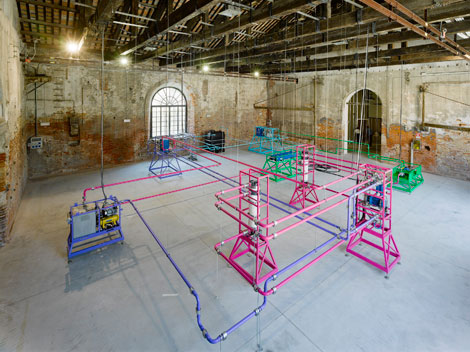







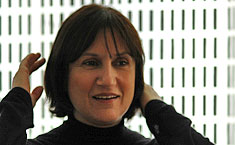 Ayşe Erkmen graduated from Mimar Sinan University Department of Sculpture in 1977. She participated in the DAAD International Artist Residency Programme (Berliner Künstlerprogramm) in Berlin in 1993. From 1998 to 1999 Erkmen worked as the Arnold Bode Professor at Kassel Art Academy, and as lecturer at Frankfurt Staedelschule (2000-2007). In 2002, she was awarded the Maria Sibylla Merian prize at Hessen Province Germany. Among numerous international exhibitions Erkmen has participated in are the 2nd and 4th Istanbul Biennials; Münster Sculpture Project; the Shanghai, Berlin, Gwangju, Sharjah, and SCAPE Biennials, as well as the Folkestone and Echigo Tsumari Triennials. Ayşe Erkmen lives in Istanbul and Berlin, and has been teaching at Münster Kunstakademie since 2010.
Ayşe Erkmen graduated from Mimar Sinan University Department of Sculpture in 1977. She participated in the DAAD International Artist Residency Programme (Berliner Künstlerprogramm) in Berlin in 1993. From 1998 to 1999 Erkmen worked as the Arnold Bode Professor at Kassel Art Academy, and as lecturer at Frankfurt Staedelschule (2000-2007). In 2002, she was awarded the Maria Sibylla Merian prize at Hessen Province Germany. Among numerous international exhibitions Erkmen has participated in are the 2nd and 4th Istanbul Biennials; Münster Sculpture Project; the Shanghai, Berlin, Gwangju, Sharjah, and SCAPE Biennials, as well as the Folkestone and Echigo Tsumari Triennials. Ayşe Erkmen lives in Istanbul and Berlin, and has been teaching at Münster Kunstakademie since 2010.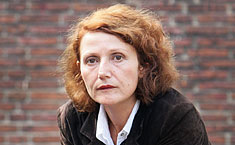 Fulya Erdemci has been Director of SKOR (Stichting Kunst en Openbare Ruimte) Foundation For Art and Public Domain in Amsterdam since July 2008. Erdemci was the Director of the International Istanbul Biennial (1994–2000); the Director of Elgiz Contemporary Art Museum, Project 4L (2003–2004); and the Temporary Exhibitions Curator at Istanbul Modern (2004–2005). She co-curated the Istanbul section of the 25th Biennale of Sao Paulo Citades/Cities (2002) and the 2nd Moscow Biennale of Contemporary Art (2007). In 2002, she initiated the ‘Istanbul Pedestrian Exhibitions’, (İstanbul Yaya Sergileri) the first urban public space exhibition in Turkey that centred on the ‘pedestrian’, and co-curated its second edition in 2005 with Emre Baykal. Fulya Erdemci has curated, together with Danae Mossman, ‘Wandering Lines: Towards A New Culture of Space’ for the 5th SCAPE Biennial of Art in Public Space, in Christchurch, New Zealand (2008). Erdemci’s recent
Fulya Erdemci has been Director of SKOR (Stichting Kunst en Openbare Ruimte) Foundation For Art and Public Domain in Amsterdam since July 2008. Erdemci was the Director of the International Istanbul Biennial (1994–2000); the Director of Elgiz Contemporary Art Museum, Project 4L (2003–2004); and the Temporary Exhibitions Curator at Istanbul Modern (2004–2005). She co-curated the Istanbul section of the 25th Biennale of Sao Paulo Citades/Cities (2002) and the 2nd Moscow Biennale of Contemporary Art (2007). In 2002, she initiated the ‘Istanbul Pedestrian Exhibitions’, (İstanbul Yaya Sergileri) the first urban public space exhibition in Turkey that centred on the ‘pedestrian’, and co-curated its second edition in 2005 with Emre Baykal. Fulya Erdemci has curated, together with Danae Mossman, ‘Wandering Lines: Towards A New Culture of Space’ for the 5th SCAPE Biennial of Art in Public Space, in Christchurch, New Zealand (2008). Erdemci’s recent 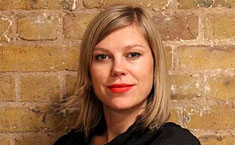 Danae Mossman co-curated with Fulya Erdemci, "Wandering Lines Towards a New Culture of Space" for the 2008 SCAPE Christchurch Biennial of Art in Public Space in New Zealand, which featured Ayşe Erkmen. Recently Mossman was Associate Producer at Situations, a public art research and commissioning agency at the University of the West of England. Previously she was Director/Curator of The Physics Room in Christchurch, New Zealand between 2004-2007, where she developed exhibitions and publications with many emerging and established artists, and initiated an artist residency programme in which Ayşe Erkmen was the inaugural resident. In addition, Mossman has curated many exhibitions as an independent curator, she writes on contemporary art for magazines and publications, and has been an advisor on a number of international contemporary art programmes. She currently works as Artist Liaison at
Danae Mossman co-curated with Fulya Erdemci, "Wandering Lines Towards a New Culture of Space" for the 2008 SCAPE Christchurch Biennial of Art in Public Space in New Zealand, which featured Ayşe Erkmen. Recently Mossman was Associate Producer at Situations, a public art research and commissioning agency at the University of the West of England. Previously she was Director/Curator of The Physics Room in Christchurch, New Zealand between 2004-2007, where she developed exhibitions and publications with many emerging and established artists, and initiated an artist residency programme in which Ayşe Erkmen was the inaugural resident. In addition, Mossman has curated many exhibitions as an independent curator, she writes on contemporary art for magazines and publications, and has been an advisor on a number of international contemporary art programmes. She currently works as Artist Liaison at 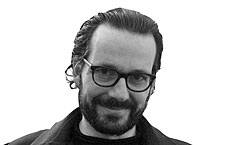 Since setting up his own practice Konstantin Grcic Industrial Design (KGID) in Munich in 1991 Grcic has developed furniture, products and lighting for leading design companies. Many of his products have received international design awards and form part of the permanent collections of the major museums (a.o. MoMA/New York, Centre Georges Pompidou/Paris). Recently Konstantin Grcic has curated a number of significant design exhibitions such as "Design Real" for The Serpentine Gallery, London (2009), and "Comfort" for the St.Etienne Design Biennale (2010). In 2010, Design Miami awarded him "Designer of the Year".
Since setting up his own practice Konstantin Grcic Industrial Design (KGID) in Munich in 1991 Grcic has developed furniture, products and lighting for leading design companies. Many of his products have received international design awards and form part of the permanent collections of the major museums (a.o. MoMA/New York, Centre Georges Pompidou/Paris). Recently Konstantin Grcic has curated a number of significant design exhibitions such as "Design Real" for The Serpentine Gallery, London (2009), and "Comfort" for the St.Etienne Design Biennale (2010). In 2010, Design Miami awarded him "Designer of the Year".







